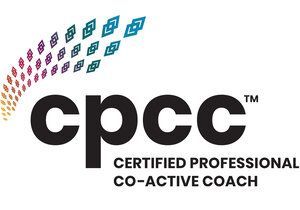Why ending a toxic relationship is easier said than done

It’s a universally known adage that relationships are hard work, conflicts are normal and rough patches are par for the course. While it is true every relationship goes through highs and lows, these platitudes can cause one to turn a blind eye to red flags in their love life, particularly those indicative of a toxic relationship.
In recent years, I often encounter clients who, despite feeling anguished, lonely, undervalued in their relationships, choose to stay with their abusive or neglectful partner. Many have also turned away from unwavering support and well-intended advice from caring friends and family who tell them that they deserve better and that they should just get out of the relationship. It is however easier said than done for those who find themselves caught in such a dilemma.
What does a toxic relationship look like?
Being in a toxic relationship is sometimes hard to recognise since the abuse can be slow and subtle in nature (King, 2018). It is never about an isolated episode, but the cumulative effect of persistent criticism, contempt, intimidation, manipulation and other forms of abuse. Such relationships are mentally, emotionally and sometimes physically damaging and draining. Those in a toxic relationship tend to find themselves constantly walking on eggshells for fear of triggering their partner, making excuses to justify the abusive partner’s behaviours, frequently taking the fall or apologising for things that are not their fault, withdrawing socially and so on. Such relationship stress often gives rise to chronic feelings such as a sense of inadequacy, low self-esteem and worth, shame, guilt, anxiety, confusion, helplessness.
So why is it that such pain, exhaustion, frustration and anguish are not enough to make one decide to cut the cord and move on? What is it about toxic relationships that makes them difficult, or even seemingly impossible to end?
Apart from the obvious practical reasons such as financial and/or parenting considerations, there are also some deeper psychological factors that explain why leaving is easier said than done.
1. Low self esteem
Research has shown that people with low self-esteem are more susceptible to toxic relationships because of their core beliefs and perception about themselves. If one believes that they are not good or worthy enough, they are more likely to have lower expectations and tend to get involved with a partner who perpetuates their beliefs. In fact, those who have low self-worth are more likely to stay in a toxic relationship because they believe that they cannot do any better (Luciano & Orth, 2017). They also tend to display more people-pleasing tendencies and are more hesitant to stand up for themselves or set boundaries when they are treated badly. It is also important to note that the more they stay in a toxic relationship, the further their self-esteem erodes, creating a vicious cycle, making it increasingly difficult to leave.
2. Addicted to the lure of intermittent reinforcement
In a toxic relationship, the abused is regularly subjected to consistent bouts of cruel, callous, and abusive treatment with a few occasional and unpredictable displays of extreme affection and rewards. These are known as intermittent reinforcement tactics that the abusive partner uses to manipulate or control, and can include sending apology notes and flowers after a silent treatment or giving extravagant gifts with promises to change after a series of brutal verbal attacks.
Intermittent reinforcement tactics keep people stuck and unable to break free because they are linked to the reward circuits of the brain that are associated with compulsions (Carnes & Phillips, 2019). Research has shown that unpredictable relationships are particularly dopamine-inducing. Intermittent reinforcement used the abusive partner feeds into our dopamine system because dopamine flows more readily when the rewards are given out on an unpredictable schedule, rather than predictably. Their abusive partner’s unreliability and inconsistency make them crave for the rewards, often doing everything they can to get it in order to get back to the comfort of the “honeymoon phase” of the cycle.
When one is living the abuse cycle, it is exceptionally hard to break out of it. People often fall into the trap of seeing the abuser’s sporadic acts of empathy and affection as positive traits, causing them to find excuses to justify the partner’s abuse or neglect. They also derive hope from these random “positive” acts, believing that their relationships will get better, and they get sucked back in until another cycle of abuse hits again.
3. Fear of being single
The fear of being single is another factor that makes one rather tolerate or stay in a toxic relationship than to be single. Researchers (Spielmann et al., 2013) discovered that during relationship initiation and maintenance, those who have anxieties about being single may prioritize relationship status above relationship quality, settling for less and remaining in relationships that are less satisfying. In fact, the fear of being single can be so overwhelming that one would rather be with a “wrong somebody” than be with nobody.
4.Sunk Cost effect
Another reason that makes it compelling for people to stay in unhappy relationships is the sunk cost fallacy. Studies have shown that people are more likely to stay in a relationship in which they have invested time, money and effort. This underlines the sunk cost effect which “occurs when a prior investment in one option leads to a continuous investment in that option, despite it not being the best decision." (Rego et al., 2018). This suggests that people stay in unsatisfying relationships despite all their pain and suffering because they don’t want to feel their effort, time or money go to waste.
5. Pro-sociality inclination
The decision to end a romantic relationship, even an unhealthy one, can have a life-changing impact on the partner as well as the self. Recent research has shed light on how altruism is one of the considerations that can hamper one’s decision to leave their abusive partner. In other words, when people make decisions that impact others, they take those others’ feelings and perspectives into consideration.
The research by Impett & Spielmann (2018) which studied 1,800 people showed that when one is deciding whether to end a relationship or not, they consider not only their own desires, but also how much they think their partner wants and needs the relationship to continue. In fact, the more dependent people believed their partner was on the relationship, the less likely they were to initiate their breakup. This offers an explanation as to why it is not as straightforward to end the toxic relationship as much as they know it is the right thing to do.
What can be done?
The recognition and acknowledgement of a toxic relationship and the reasons that keep one stuck in it is just the first step to finding a resolution to the predicament. Aptly put by Carolyn Gamble, motivational speaker and expert on toxic relationships, “Love should never cost you your peace, It should never cost you your joy. It should never cost you your happiness. If there’s more negative in your situation than positive, something has to change.”
Thankfully, taking action does not have to be a solo task. The next step could involve seeking help from relationship-trained therapists to help one explore their innermost fears and ambivalence; open their mind to new perspectives, enable them to regain self esteem and empower them to access choices as well as to make decisions that are aligned with their life values.
References
Carnes, P., & Phillips, B. (2019). The betrayal bond: Breaking free of exploitive relationships. Deerfield Beach, FL: Health Communications.
Joel, S., Impett, E. A., Spielmann, S. S., & MacDonald, G. (2018). How interdependent are stay/leave decisions? On staying in the relationship for the sake of the romantic partner. Journal of Personality and Social Psychology, 115(5), 805–824.
King, J. (2018). Too Good to go, Too Bad to Stay: Five Steps to Finding Freedom From a Toxic Relationship. Morgan James Publishing.
Luciano, E. C., & Orth, U. (2017). Transitions in romantic relationships and development of self-esteem. Journal of Personality and Social Psychology, 112,307-328
Rego, S., Arantes, J. & Magalhães, P. (2018) Is there a sunk cost effect in committed relationships?. Curr Psychol 37, 508–519
Spielmann, S. S., MacDonald, G., Maxwell, J. A., Joel, S., Peragine, D., Muise, A., & Impett, E. A. (2013). Settling for less out of fear of being single. Journal of Personality and Social Psychology, 105(6), 1049–1073.










